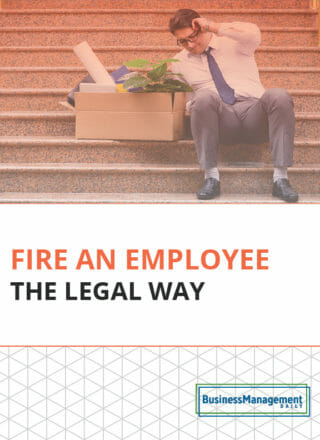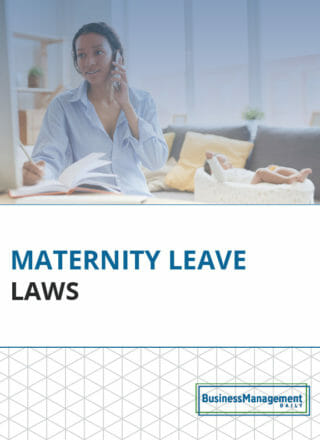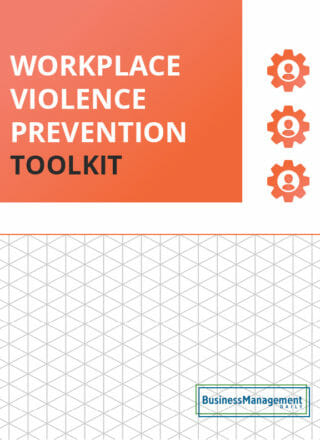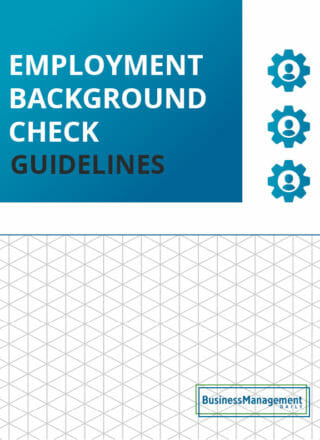What can you not do while on FMLA leave? Top things to look out for.
FMLA leave serves an essential purpose, allowing employees to take time off to care for family members or handle serious health issues without the risk of losing their jobs.
However, FMLA leave is also a complex human resource matter for employers, who must follow the law precisely while looking for potential FMLA abuse.
What happens when an employee on FMLA leave posts photos from their luxurious beach vacation or mountain climbing adventure? Or when a co-worker spots them moonlighting at another job?
Employers who jump to conclusions without diving into the specific guidelines on these matters may end up in hot water themselves if they wrongfully terminate or discipline employees on FMLA leave.
However, you can still take corrective action if any employee on FMLA leave violates the terms.
We’ve outlined some of the most common concerns below to help clarify what employees can do. Learn what employees can and can not do while on FMLA leave and when an employee’s activities should actually raise suspicions.
What is FMLA leave?
FMLA leave refers to leave taken by the Family and Medical Leave Act (FMLA). A federal law allows eligible employees up to twelve weeks of leave. Leave reasons include specific family or medical issues within 12 months.
This leave is unpaid but job-protected. Employees can return to the same or a similar job with equivalent pay and benefits. Leave can be taken all at once or intermittently, depending on needs.
FMLA leave can be used for:
-
Family bonding within one year of the birth, adoption, or foster care placement of a child.
-
Possession of a serious health condition that significantly limits the employee’s ability to perform the essential functions of their job. This may be due to the condition’s symptoms incapacitating the employee or for treatment related to a serious medical condition.
-
Caring for a family member with a qualifying serious health condition. This generally applies to the employee’s spouse, children, and parents. In rare circumstances, siblings may qualify.
-
A qualifying exigency related to an employee’s spouse, child, or parent’s “covered active duty” military service.
To qualify for FMLA leave, the employee must meet specific eligibility guidelines, including:
-
Working for a covered employer. Covered employers include private employers with 50 or more employees working within a 75-mile radius. Government agencies and local educational agencies also qualify as covered employers regardless of the number of employees that they have.
-
Meeting length of service requirements. The employee must have worked for the same employer for at least 12 months and clocked in at least 1,250 work hours during the preceding 12 months.
-
Possessing a qualifying reason. Employees will need to verify, generally in the form of medical certification, that they have a qualifying reason to request FMLA leave.

What employees can and cannot do while on FMLA leave
The guidelines on what employees can’t do while on FMLA leave are not always black and white. Most issues vary on a case-by-case basis.
Hence, employers must maintain clear procedures and documentation on FMLA matters and seek legal advice before accusing employees of abuse or wrongdoings.
Going on vacation
An employee going on vacation during their leave period does not inherently mean that FMLA abuse occurs.
As long as the employee is using their leave for its intended purpose, there generally aren’t any restrictions on where they can spend their time off.
For example, some families use family bonding leave as vacation time. Under the FMLA, new parents can use their leave at any point in the 12 months following the birth, adoption, or foster placement of a child to bond with the child.
Family vacations and visits to extended family fall under family bonding time. Employers should not object to families using it leave for trips like Disney World.
Employees may also perform FMLA-eligible caregiving duties for sick family members on vacation. While you may picture those battling a serious health condition to be bedridden, it’s not uncommon at all for seriously ill (and even terminal) patients to go on vacations to lift their spirits or see destinations that they’ve always wanted to experience.
FMLA leave and personal health conditions
When FMLA leave is taken for an employee’s serious health condition, vacationing often becomes more questionable to employers. Employees can rest and recover from a medical procedure or health flair-up on a restful beach vacation.
Still, an employee taking FMLA leave for a contagious illness like COVID-19 probably shouldn’t be spending their time off visiting crowded tourist destinations or nightclubs.
When the activity does not align with the information provided on the employee’s FMLA request and medical certification, FMLA abuse might be at play.
Employers need to tread carefully here. Terminating an employee for vacationing on FMLA leave without a thorough investigation and strong reasoning for suspecting FMLA abuse will often lead to wrongful termination lawsuits and other legal disputes.
Seek legal advice before taking any disciplinary employment action.
Completing work while on FMLA leave
Employers cannot require employees on FMLA leave to complete or finish any work. The Department of Labor (DOL) prohibits employers from interfering with, restraining, or denying the exercise of or an attempt to exercise any FMLA rights, including discouraging employees from using FMLA leave.
However, employees can technically work voluntarily during their leave. In the case of D’Onofrio v. Vacation Publications Inc, the court ruled that “giving employees the option to work while on leave does not constitute interference with FMLA rights so long as working while on leave is not a condition of continued employment”.
Therefore, voluntary work is technically alright if all other employment laws, including applicable wage laws, are followed.
Employers should still refrain from requesting that employees complete any work or encourage employees to work while on leave. However, reaching out with occasional questions is usually acceptable for me.
These questions should relate to document locations or the status of a project or account. Keep communications minimal and non-disruptive. If an employee volunteers to work during leave, employers may allow it, but they should proceed cautiously and be aware of their wording and requests.
Working another job during FMLA leave
FMLA leave is unpaid leave. This can cause financial stress for eligible employees who must take leave to receive medical treatment, bond with a new family member, or handle caregiving responsibilities for a sick family member.
However, can employees work a second job or pick up gig work during their leave to alleviate some of this financial burden? The answer is often yes.
The law does not restrict employees’ ability to earn supplemental income while on leave. However, the law does allow employers to apply existing company policies on moonlighting to employees on leave.
Per FMLA guidelines, “if the employer has a uniformly-applied policy governing outside or supplemental employment, such a policy may continue to apply to an employee while on FMLA leave”.
Employers without these policies cannot restrict outside employment. They also cannot deny leave protections to employees working a second job during leave unless the employee abuses FMLA leave.
Employers will want to look out for employees working a second job similar to the one they are on leave from. For example, an employee took FMLA leave for a medical condition.
The essential job functions are largely the same between the two jobs, which could call into question the legitimacy of the employee’s need for FMLA leave.
Using FMLA leave for other illnesses
Employees approved for intermittent FMLA leave must use it only for the reason on their documentation. For example, an employee with migraines cannot use FMLA leave for unrelated illnesses, like food poisoning. These employees should use standard sick leave for unrelated illnesses.
Additional resource: Read more about FMLA requirements and what they mean for your business.
More Resources:
FMLA retaliation — what employers need to know
Pregnancy leave — everything employers and employees need to know





